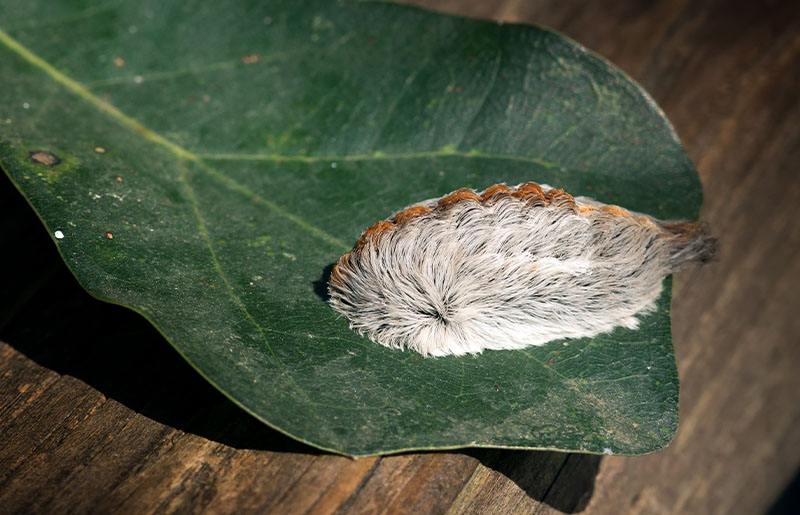
The Asp Caterpillar: Look But Don't Touch
By Cheryl Conley, Board of Directors Lake Creek Greenway
When we see something little, cute, and fluffy, our first instinct it to pet it or pick it up. But you want to steer clear of this little fella. It’s the asp caterpillar also known as the Toxic Toupee also known as the puss caterpillar. Lots of names for such a little thing. They are more formally known as the Texas southern flannel moth Megalopyge opercularis. They are only about an inch to an inch and a half long, are tear-drop shaped, are covered in a thick coat of tan to grayish white hairs and are most active at night. The head and legs aren’t visible from the top. They are one of the most toxic caterpillars in North America and can be found on the east coast from New Jersey to Florida and as far west as Texas.
The life cycle of the asp is egg to larva (caterpillar) to pupa to adult. The first stage of the life cycle is the egg. Eggs are laid by adult females in rows or clusters on twigs or leaves and are covered in hairs. A tiny caterpillar grows inside the egg. As the larvae (caterpillar) grow, they become more hairy. Once they hatch, their main job is to eat and grow. During this time, they will shed their skin 4 or 5 times. When fully grown, it stops eating and spins a cocoon as a protective cover for the pupa. The cocoons are very tough and often remain on the twig long after the moth has emerged. The life cycle is now complete and it starts again when the female lays eggs.
-
Put tape over the wound and quickly pull it off to remove any spikes.
- Wash the area with soap and water.
- Apply an ice pack which will help numb the pain.
- You can take antihistamines to help with pain and swelling.
- For more severe symptoms, see a physician.
Before touching any insect or animal, make sure you’ve done your homework. Sometimes looks are deceiving!
 |
|
|
Written by: Cheryl Conley
Cheryl currently sits on the Board of Directors for the Lake Creek Greenway Partnership. She is also currently working with a Montgomery County Commissioner on a new nature center/wildlife center. Previously, she was the president of TWRC Wildife Center and Vice President of Friends of Texas Wildlife. Cheryl is a State of Texas permitted wildlife rehabilitator.
|

